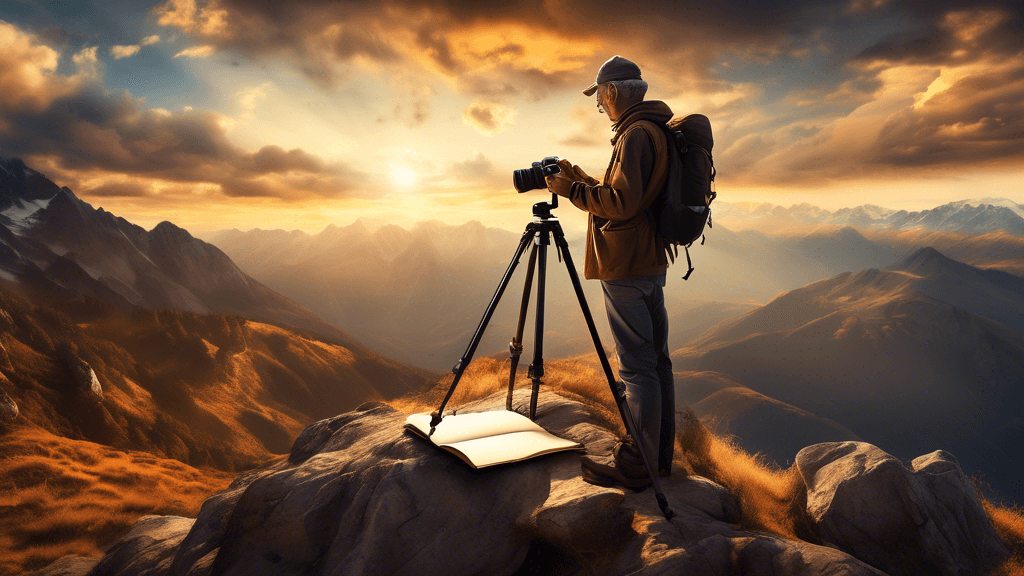
Capturing the Heights: Tips and Techniques for High Altitude Photography
Share
Introduction to High Altitude Photography
High altitude photography, capturing images from elevations above 2,000 meters (6,562 feet), presents photographers with unique challenges and opportunities. Whether you are perched on a mountain peak, aboard an aircraft, or trekking through a high-altitude region, the landscape from such heights offers breathtaking views that are begging to be captured. But how do you ensure your high altitude photos stand out?
Understanding the Challenges
Before diving into the techniques, it’s crucial to discuss the unique challenges photographers face at high altitudes:
- Thin Air and Light: The higher you go, the thinner the air gets. This affects not only your physical condition but also the way light behaves and how your camera interprets these changes.
- Temperature and Weather: Temperatures can drop significantly, and weather conditions can change rapidly, affecting both your equipment and your ability to shoot effectively.
- Equipment Handling: Handling camera gear with gloves on and managing batteries that drain faster in the cold are additional hurdles that need careful consideration.
Essential Gear for High Altitude Photography
Choosing the right gear is half the battle when preparing for high altitude photography. Here’s what to consider:
- Lightweight and Durable Camera Equipment: Opt for gear that offers a good balance between durability and weight. Mirrorless cameras are a great choice for their compact size and high-quality image capability.
- Lenses: A versatile zoom lens can be more practical than carrying multiple prime lenses. Consider lenses with image stabilization to help counteract the effects of wind or unsteady hands.
- Protective Gear: Weather-sealed camera bodies and lenses offer an added layer of protection against the elements.
- Tripod: Use a lightweight, robust tripod that's easy to set up, even when wearing gloves.
- Extra Batteries: Cold weather can reduce battery life, so carry extras and keep them warm by storing them close to your body when not in use.
Techniques for Capturing Stunning High Altitude Photos
With your gear sorted, let's focus on the techniques that will help you capture stunning high altitude photos:
- Maximize the Golden Hours: The golden hours—shortly after sunrise and before sunset—provide soft, warm light that can dramatically enhance your high altitude landscapes.
- Utilize the Clear Sky: The lack of atmospheric haze at high altitudes can yield incredibly clear and vivid sky shots. Use polarizing filters to enhance the blues or capture the vastness of the skies.
- Composition Techniques: Pay attention to compositional elements like leading lines, the rule of thirds, and framing. Mountains, for example, provide natural lines and curves leading the viewer's eye into the image.
- Focus on Details: While vast landscapes are compelling, sometimes the most striking images are found in the small details: a patch of colorful wildflowers, patterns in the ice, or rugged textures of the rock.
Advanced Tip: Focus Stacking
Focus stacking involves taking multiple photos with different focus points and combining them in post-processing to create an image with greater depth of field. This technique is particularly useful in high altitude photography where you want both the foreground and the distant landscape to be in sharp focus.
The Role of High Altitude Photography in Environmental Conservation
High altitude photography does more than create stunning visuals; it plays a crucial role in environmental conservation. Images captured from these perspectives can highlight the beauty and fragility of these environments, promoting awareness and action.
Notable conservation photographer, John Doe, stated, Each photo from above tells a story that can inspire communities to protect our planet's most vulnerable landscapes. Capturing images that convey the impact of climate change on high mountains can drive home the urgency of preserving these precious ecosystems.
Conclusion
High altitude photography is not just about aerial views or stunning landscapes; it's an adventure and a technical challenge that requires photographers to be mindful of their environment, equipment, and the stories they wish to tell. While this type of photography presents unique challenges, the rewards are equally unparalleled—the chance to see and capture the world from a perspective few ever experience.
Are you ready to take your photography to new heights? Remember, every high peak offers a new perspective and an opportunity to capture the awe-inspiring beauty of our planet. So, gear up, plan carefully, and embark on your high altitude photographic journey with confidence!





